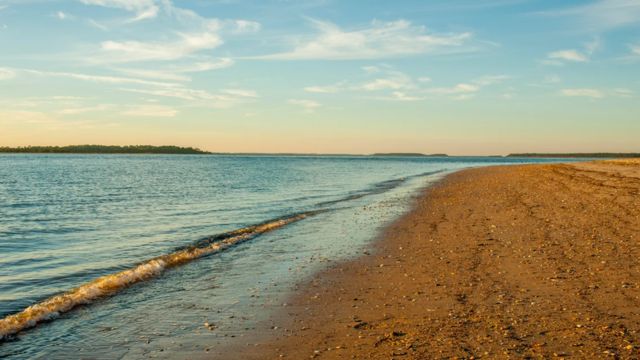Tourists exploring an island off the coast of South Carolina accidently discovered human skeleton remains, which authorities suspect may be linked to a forgotten, centuries-old burial place.
The tourists were on Jeremy Cay, a private beachside enclave on Edisto Island about 45 miles southwest of Charleston, on May 23 when they discovered what they initially thought were fossils, according to the Colleton County Sheriff’s Office. However, when the tourists realized the remains appeared to be human, they quickly notified the sheriff’s office and the Edisto Beach Police Department, the sheriff’s office stated.
Authorities soon arrived at the scene and secured the area. The Colleton County Coroner’s Office also helped with the investigation and collection of the remains, which were then taken to the Medical University of South Carolina for forensic study and identification, according to the sheriff’s office.
“The discovery location is historically significant, as it was once home to the 19th-century settlement known as Edingsville Beach,” the sheriff’s office stated in a news statement. “Early indications suggest the remains may originate from a long forgotten burial site.”
The sheriff’s office stated that the identification of the remains and the circumstances of their death are now unknown. The investigation is ongoing, and the sheriff’s office said it is collaborating with the county coroner’s office and other organizations to discover more about the remains and their origin.
Colleton County Coroner Richard Harvey told Newsweek on May 25 that the remains included a cranium and disjointed bones. According to Newsweek, Harvey described the discovery as “rare” and speculated that the remains could be from the Revolutionary or Civil Wars.
What is the name of Edingsville Beach?
The town was empty during the Civil War and mostly abandoned after it ended in 1865, according to the article. A hurricane struck Edisto Island in 1885, destroying the majority of the settlement’s remaining structures.
According to the story, the last structures on Edingsville Beach were destroyed by another hurricane in 1893. Only a short stretch of beach remains to remind visitors of the old village.
The island has previously yielded bones and remains, according to the story. In 2015, a Pennsylvania tourist visiting the north end of Edisto Island discovered six bones. Soon after, a former Edisto Beach State Park ranger discovered a skull with teeth attached.
According to the report, paleontologists later established that both sets of remains were from 1865 and 1870, respectively. One of the sets was recognized as a cow skeleton.
According to an article on the Edisto Island municipal website, the Jeremy Cay neighborhood is close to Edingsville Beach, a former vacation spot favored among wealthy Southern families in the early nineteenth century.
“It was initially established for wealthy Charleston families as a seasonal refuge to escape the humidity and heat in the Lowcountry,” according to the story. “For a few decades, Edingsville Beach was the place for the elite to be seen.”
According to the text, the settlement in 1825 consisted of 60 tabby and brick buildings with verandas that faced the ocean. Edingsville Beach also housed multiple churches, service buildings, boathouses, fishing shacks, a billiard saloon, and a school.
The community began to disintegrate throughout the decades as a result of coastal erosion and the impacts of the Civil War, the report states.
According to the story, visitors began to observe that the shifting sands and ever-lapping tides were taking their toll on the beach. “In addition, the Atlantic surf had managed to scoop up about 20 of the homes before the Civil War began.”

 by
by 

